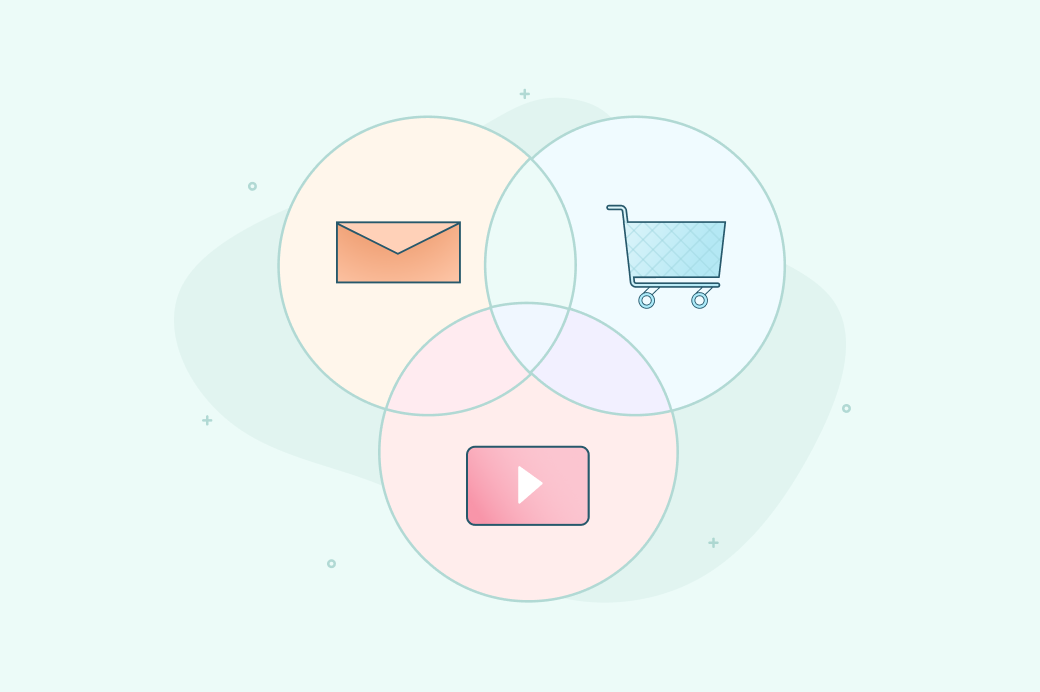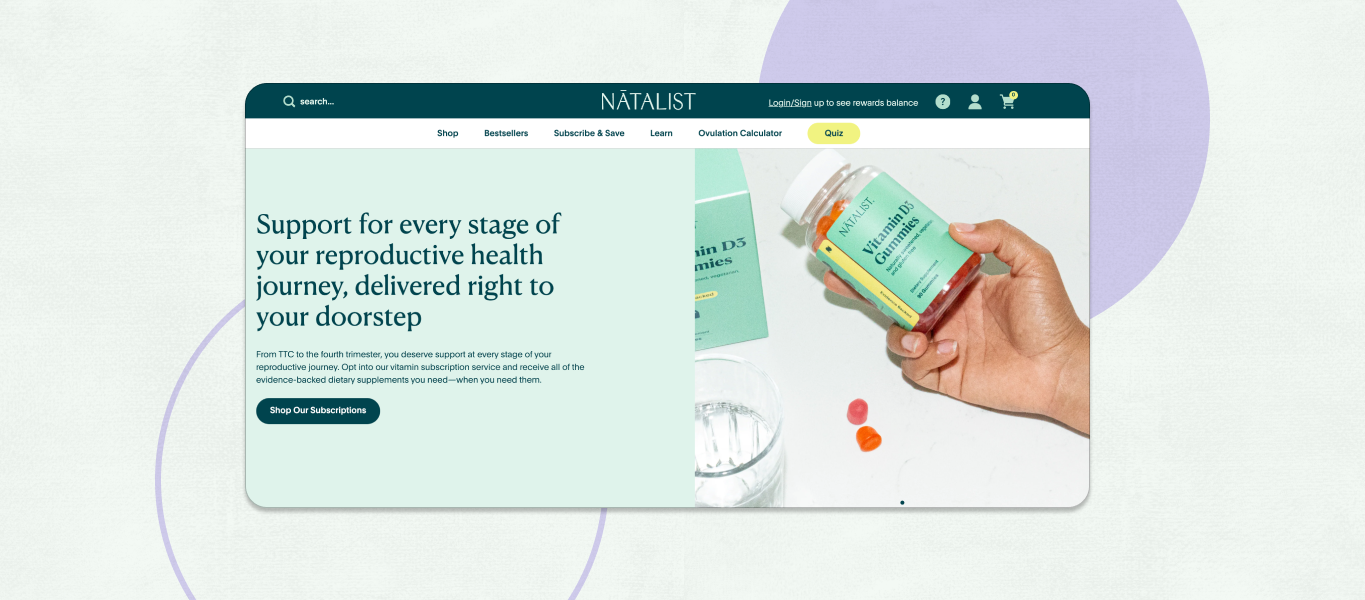This blog post is a guest submission from our friends at BigCommerce.
Your customers may not understand what “omnichannel” means, but they know when the buying experience is jarring from channel to channel or when they can’t find your products where they’re looking for. Their expectations now include ultra-personalized experiences, consistent cross-channel brand presence, and the ability to purchase when and where they want. Building an omnichannel strategy with your customers in mind allows for a seamless, customizable experience ultimately resulting in customer delight.
Particularly in the face of COVID-19, which drove people to more online shopping than ever before, it’s critical to deliver a compelling offer to customers wherever they are.
A big part of your omnichannel strategy, think of it like multi-channel, will be around marketing and advertising — but there’s a lot more to it than that, especially if you’re looking to scale.
Let’s dive into the benefits of omnichannel, then get specific about all the necessary components of your strategy.
Why create an omnichannel strategy?
After many physical stores were closed or forced to operate at a reduced capacity after COVID-19, merchants had to make quick decisions about how to meet customer needs. Stores without existing digital channels were at a distinct disadvantage.
Adding to the disruption, stuck-at-home consumers sought new avenues of both shopping and entertainment — and some capitalized on the opportunity to be more adventurous. A McKinsey study showed that 75% of U.S. consumers tried a new shopping behavior as a result of COVID-19 impacts.

Source: McKinsey
“COVID-19 has forced everyone to operate at a much higher level of digital maturity. To succeed today, retailers need to put a stake in the ground and define a unified channel strategy from a digital and physical perspective.”
Sharon Gee Head of Omnichannel Partnerships at BigCommerce
In a 2020 research report from BigCommerce and Retail Dive, 46% of retail executives reported planning to increase omnichannel investment moving forward, compared to their pre-COVID plans.
Be where your customers are
COVID-19 has diverted and dispersed consumer shopping activity. Customer journeys used to be, for the most part, linear — but now, people have so many new ways to discover brands and products. To get the visibility they want, merchants need to meet customers where they are.
An important outcome of delivering the right message to the right people at the right time is making the shopping journey more convenient for consumers. If they’re browsing on Instagram, it may be convenient for them to complete an entire purchase process without leaving the app. If they’re accustomed to shopping in-person at traditional brick & mortar stores, they may be more apt to want buy-online, pick up in-store (BOPIS) or curbside pickup.
Make data-driven business decisions
The sudden, drastic changes in consumer behavior mean that some retailers may need to rethink their sales and marketing channel mix or even their product offerings to optimize for the “new normal.”
Implementing an integrated omnichannel strategy — with a fully integrated tech stack — enables you to centralize data from all important sources to help you identify the best ways to balance inventory and provide the service and support customers want, wherever they shop.
Create a shopping journey that spans the customer lifecycle
Just as the customer journey is no longer linear, it should also be (at least ideally) infinite. A truly valuable omnichannel approach will serve existing customers just as much as prospective ones. With customer acquisition costs (CAC) continuing to rise, it will be important to consider the whole lifecycle of the customer so they can be retained and have greater lifetime value (LTV).
Subscriptions are one example of a great retention tool. Staying top of mind with customers and giving them a frictionless ordering experience provides the kind of convenience that today’s consumers are looking for.
The four pillar approach to omnichannel commerce
The four pillars of a successful omnichannel strategy include sales channels, marketing & advertising, operations, and fulfillment. All these functions need to work together seamlessly to provide the best possible omnichannel customer experience.

Source: BigCommerce
What’s clear from much of the data coming out of COVID-19 shopping habits is that one of consumers’ biggest priorities is convenience.
1. Sales channels
Consumers are browsing, researching, and purchasing products in more ways and places than ever before, from online storefronts, to marketplaces like Amazon and social platforms. In the last year or so, social commerce opportunities have seen a big increase, with greater investment from Facebook, Instagram, TikTok and more.
But marketplaces are still growing, with major players like Walmart making a more concerted play against Amazon. In times of rapid change like this, you’ll have to keep a close eye on trends and performance to confirm that your plan continues to be the right way to move forward.
Is your target audience shopping on Amazon? Are they shopping on Walmart’s marketplace? And what about social channels? Look at your demographic and the makeup of your specific audience and choose the sales channels where you have the best chance of being noticed by your target market.
2. Marketing and advertising
Even with the best products, you’ll need to leverage marketing and advertising to some extent, to get the word out. Like with sales channels, marketing channels are evolving quickly, too.
Large marketplaces are now delivering ads through their platforms, and social media has value as both showroom and storefront. Surfacing the right message at the right time and place can have a huge impact on your bottom line — especially if you artfully deliver a consistent brand experience wherever you are.
3. Operations
Think everything in your back-office: product information, order and inventory management, logistics… From an operational perspective, the key to success in your back-office is connectivity, while the tools you choose will depend more on your business.
One of the biggest barriers to a fully omnichannel strategy is omnichannel inventory management. It isn’t easy to get a unified view of all sales, inventory, and customers — but that centralized visibility is necessary so you never miss a beat between sales platforms.
Take a look at your tech stack and see where you might be able to connect a solution that helps you do more in one place. The less you have to manually aggregate data, the better. Lean toward solutions that can help you keep track of everything all at once to reduce possibility for error.
4. Shipping and fulfillment.
The more sales channels you have, the more complex fulfilling orders becomes — and if you’ve got numerous warehouses across the country, even more so.
Many merchants find that meeting customer expectations is easier with the help of dedicated shipping software. You may find negotiated rates, visibility into shipping status, and reporting — or a 3PL (third-party logistics) company, which includes processes like inventory management, warehousing and fulfillment.
Steps to an omnichannel customer lifecycle
Omnichannel can be as simple or as complex as you make it, so the steps below aren’t necessarily all-encompassing. That said, they’ll give you a great framework to how to start thinking about your extended omnichannel buyer journey.
1. Determine which channels you’ll use for sales and for marketing and/or advertising
To do this well you’ll first have to segment your customers by demographic and psychographic data points, online behavior, marketing interactions, and more. Once you’ve distinguished between your core customer segments, you can align each to a channel strategy.
Merchants have to know a lot about their consumers to reach them in the most advantageous ways — how they behave, where they browse, where they buy, and what motivates them to purchase, for starters. Use a mix of qualitative and quantitative data to forecast which channels will be the most profitable, the most efficient, and/or the ones with the most chance of obtaining new customers.
2. Integrate your tech stack
From inventory visibility to richer data opportunities, you’ll want all the pieces of your tech stack seamlessly integrated to communicate and share information, when appropriate. Tying marketing and ecommerce efforts more closely together enables you to better aggregate your most important data to assess performance and discover opportunities.
3. Provide cross-channel customer support
If you interact with customers on a channel, you should be ready to support them via that channel. Frictionless, seamless support conversations should be available on any channel where you talk to people. Providing great support your customers can count on as a differentiator may help increase their lifetime value and solidify them as loyal customers.
4. Don’t forget customer retention
Some businesses spend so much time and money on customer acquisition, they don’t do enough to incentivize existing customers to remain loyal. There are plenty of things you can try to nurture existing customers, but here are a few:
Subscriptions
Offering a subscription model is a popular way to keep customers coming back. And, once those subscribers are full-fledged fans, they’ll be valuable to more than just your revenue. A great subscriber engagement strategy will build on brand affinity, draw in more fans, and give you a larger group from which to solicit honest feedback about your products and services. Back to the idea of convenience, subscriptions also make re-ordering super convenient for buyers.
Retargeting ads
If someone who has purchased from your store before returns to browse but doesn’t purchase anything, retargeting can be a great way to stay top of mind with them and remind them of what they were looking at. Retargeting ads can be highly personalized, and when customers see your business pop up on their screens, the exposure effect indicates those customers can, over time, develop preferences for the things to which they’ve been most exposed.
Email and SMS
Email is still the holy grail of marketer interactions, thanks to its high response rate compared to other channels and mediums. SMS, email’s newest younger cousin, uses text messaging to reach shoppers. These are great tactics to build relationships with your core audience and get them so excited about your brand that they’ll become an advocate.
Wrapping up
With customer expectations higher than ever, developing a comprehensive omnichannel strategy will help you better provide the convenience they want, when and where they want it. When they experience your brand across channels in a consistent and compelling way, you’re more likely to stay top of mind and garner further touchpoints.
Plus, the more interactions you have with your customers, the better — for your data. Over time, you’ll get an increasingly clear view of where your customers are; how, where and when they interact; and how the channels interact and intersect across the purchase journey.
But, while a lot of people talk about omnichannel sales and marketing, don’t forget the other two critical pillars: operations and shipping/fulfillment. With a holistic four-pillar strategy, your business can fire on all cylinders by advertising, marketing, and selling exactly where your customers are, handle inventory, orders, and customer support from multiple channels without skipping a beat, and get their products to their doorsteps — all in a way that keeps customers happy.
Follow the steps we’ve laid out to begin or bolster your omnichannel journey or, if you’d like to learn more about omnichannel strategy, read our 2021 guide to omnichannel commerce.
To learn more about utilizing Recharge & BigCommerce, click here.



